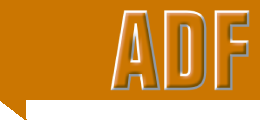ADF Awards
The ADF announces various prizes to reward scientists / researchers from the field of dermatological research. In addition to the Paul Langerhans Award for established researchers and the Egon Macher Award for young investigators outstanding works in the field of allergy research (ADF / ECARF Award of European Allergy Research) and oncology (Dermato Oncology Junior Scientist Award) will be honored on the ADF Annual Meetings.
In addition, the best posters will be awarded with a poster prize.
For the complete tender texts and the detailed allocation policies please click on the highlighted link.
Please note:
For poster prices, the ADF / ECARF Award for European Allergy Research, the Dermato Oncology Junior Scientist Awards and for the Translational Research Award, a separate application is not necessary. For these prices all abstracts submitted before the deadline will be evaluated.
Submissions for the Paul Langerhans Award and the Egon Macher Award should be made in all cases exclusively in electronic form as one PDF file to the ADF office.
Submission closed
Egon Macher Award of the ADF
- Young Investigator Award -
sponsored by AbbVie Germany & Co KG
-
The Egon Macher Award was launched in 2003 and is given every year by the ADF to young investigators for outstanding research contributions in experimental dermatology.
-
The award has a volume of 7500 € and can be donated to up to two young investigators. In case the Scientific Awarding Committee is unable to find a suitable candidate among the applicants the award is waived and the amount of money will be added to the Egon Macher Award given in the subsequent year.
-
Every ADF member not older than 40 years is eligible for application. Candidates that have received other major ADF awards are excluded. Directors of clinical departments are also excluded from application. Only the applicant and the senior author but not any of the coauthors of the awarded publication are the designated awardees.
-
Only the first author but not any of the coauthors of the submitted publication are eligible to apply for the Egon Macher Award. Only one publication can be submitted per applicant.
-
The submitted publication should not be older than 1 year. For publications in press applicants must provide a letter from the journal editors confirming that the submitted manuscript is accepted for publication.
-
Together with the work a letter of confirmation must be submitted stating that all scientific contributors of the publication are properly mentioned either in the title, in footnotes or within the text and that they all agree with the submission of the work for the Egon Macher Award by the applicant.
-
The majority of the research described in the submitted publication should have been conducted in Germany, Austria or Switzerland.
-
Submission must be done electronically, via a PDF file, to the ADF office prior to the 1st of November. In addition to the publication and the confirmation letter as outlined above the applicant should submit via a CV and a list of publications as PDFs. The different documents must be combined into a single PDF file.
-
The ADF office will check all submitted applications for correctness and completeness. Only formally correct applications will be sent out for evaluation by the Scientific Awarding Committee.
-
The Scientific Awarding Committee will make a suggestion for a suitable candidate. This suggestion will be presented to the ADF board. The evaluation criteria are: relevance, novelty, originality, complexity of methods and depth of scientific work-up, plausibility, quality of the journal and previous scientific achievements of the applicant.
-
The award is given to the awardee during the Annual Meeting of the ADF.
- The awardee is asked to publish a mini review at the ADF home journal Experimental Dermatology (mandatory with acceptance of the award).
Scientific Awarding Committee:- Prof. Dr. Karin Loser (Chair)
- Prof. Dr. Rüdiger Eming
- Prof. Dr. Kilian Eyerich
- Prof. Dr. Mario Fabri
- Prof. Dr. Evelyn Gaffal
- Dr. Elsa Neubert
- Prof. Dr. Ralf Ludwig
Past awardees of the Egon Macher Award of the ADF
Cancer cells impair monocyte-mediated T cell stimulation to evade immunity (Nature, 21st of October 2024).
Anna Redl, Vienna
Lukas Leiendecker, Wien
Simona Saluzzo, Vienna
Maike Effern, Bonn
(Immunity 53, 1–17 September 15, 2020)
Johanna Strobl, Wien
(Science Translational Medicine 2020)
Julia Matthias, Berlin
Matthias et al., Sci. Transl. Med. 11, eaau0683 (2019) 20 February 2019
Artem Vorobyev, Lübeck
NATURE COMMUNICATIONS (2019) 10
Elsa Neubert, Göttingen
Nicole Glodde, Bonn
Nadine Lohmann, Leipzig; Lucas Schirmer, Dresden
Xiaolei Ding, Cologne
Jan P. Nicolay, Mannheim
Johanna Knipper and Sebastian Willenborg, Cologne/Edinburgh
Yuliya Skabytska, Tübingen
Tobias Bald, Bonn
Maria Carolina Florian, Ulm
David Ellinghaus, Kiel
Jenny Landsberg, Judith Kohlmeyer, Marcel Renn, Bonn
Thomas Wiesner, New York
Stefanie und Kilian Eyerich, München
Jochen Utikal, Mannheim
Christoffer Gebhardt, Heidelberg
Evelyn Gaffal, Bonn
Karin Loser, Münster
Anca Sindrilaru, Thorsten Peters, Ulm
David Schrama, Würzburg
Esther von Stebut, Mainz

